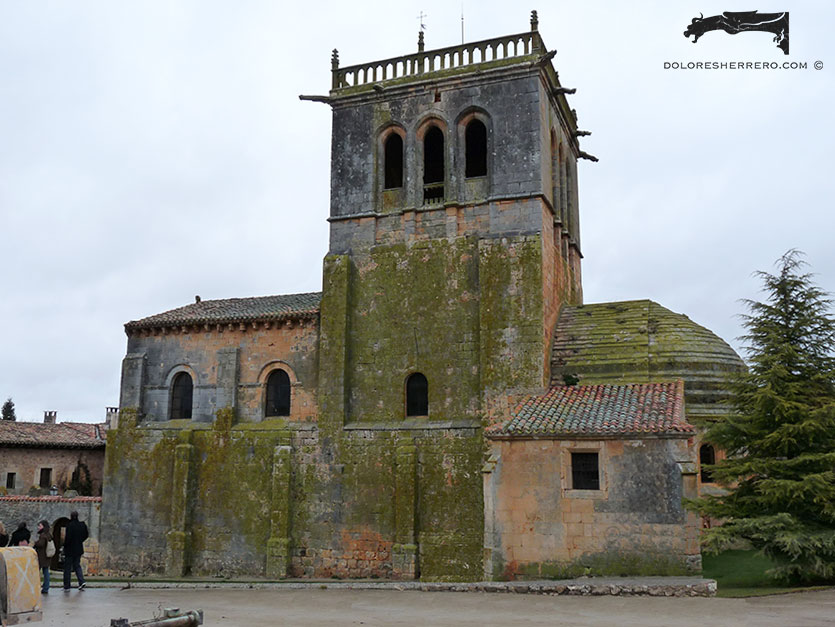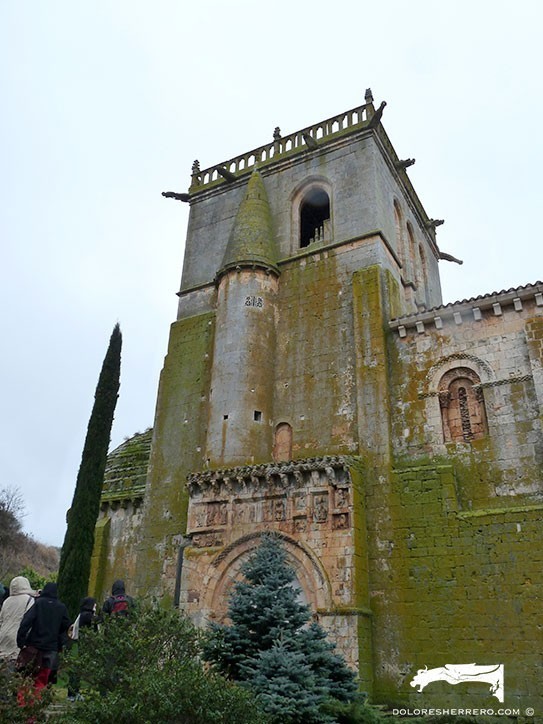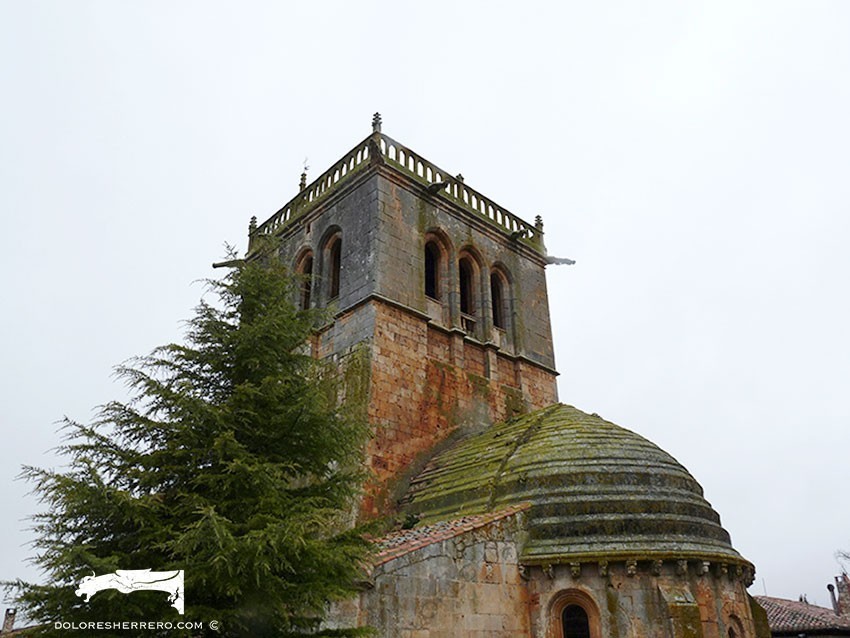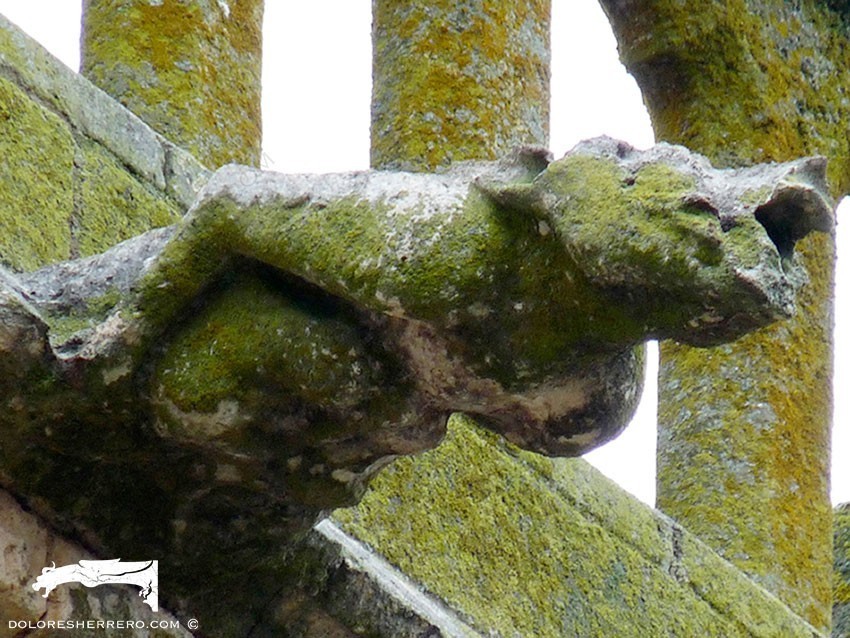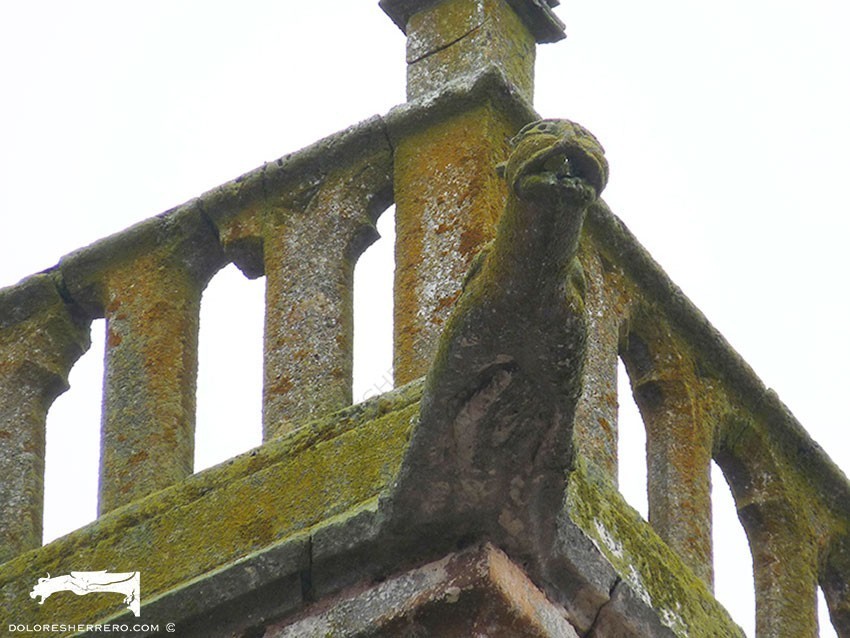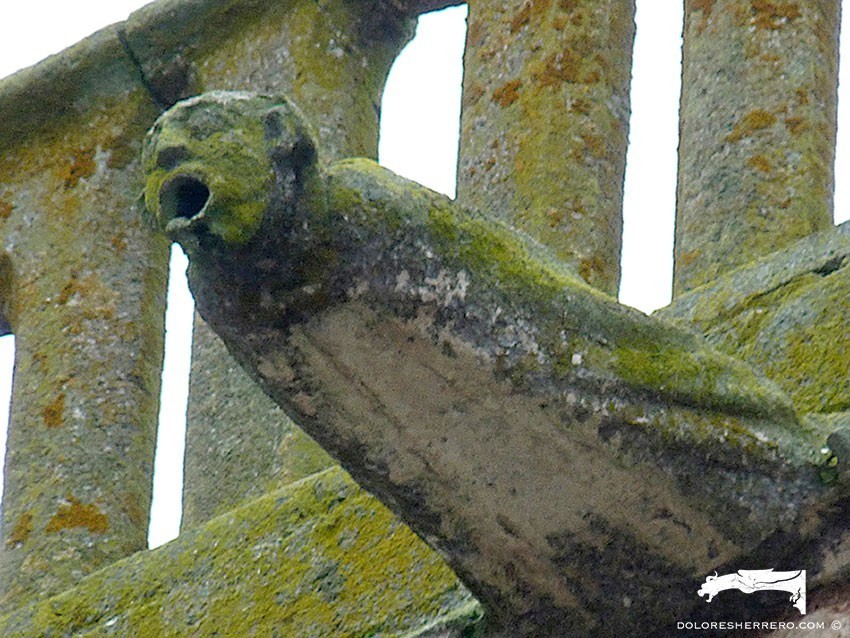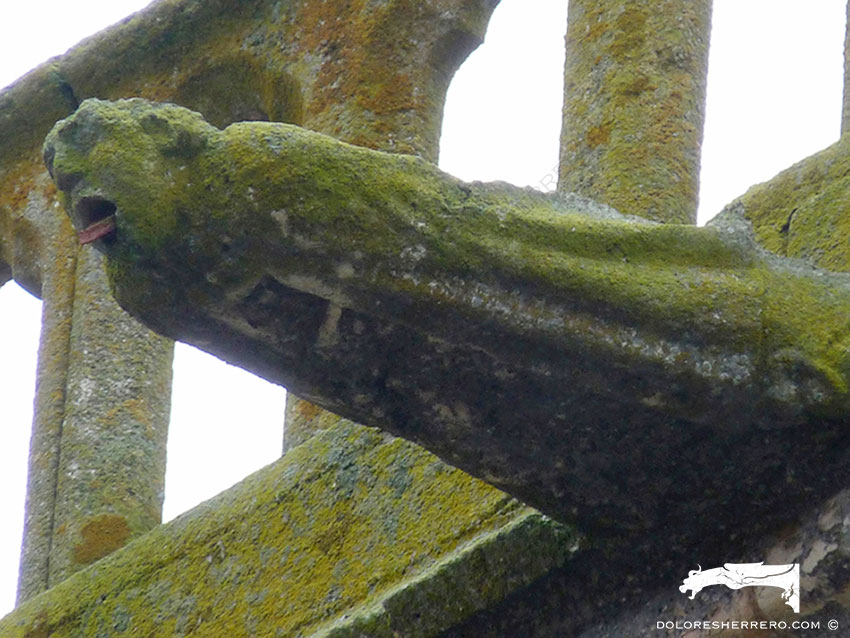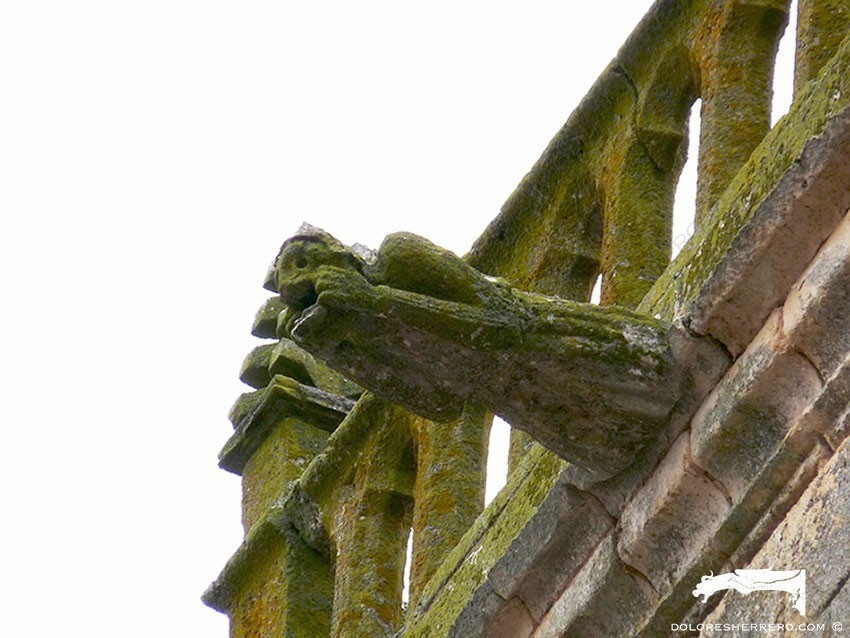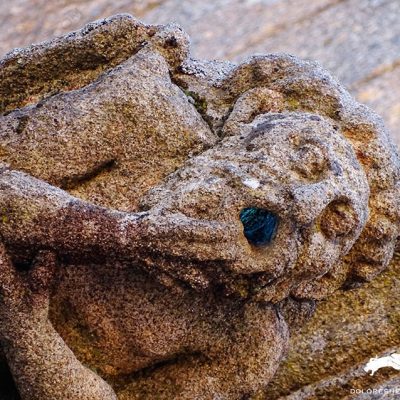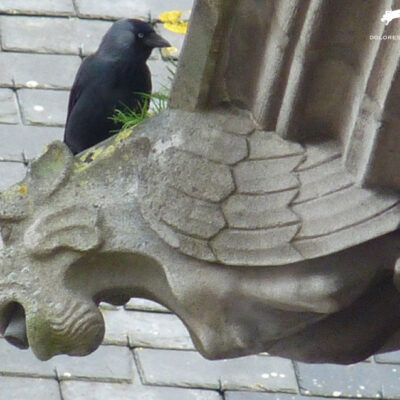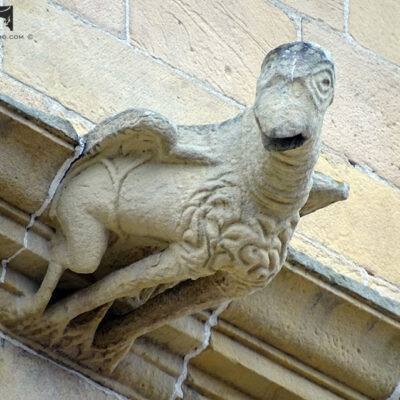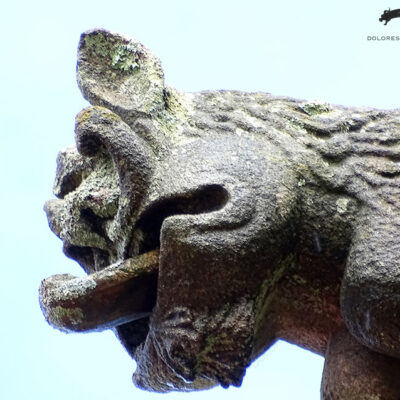Today we take a closer look at some truly remarkable gargoyles. In Los Ausines (Burgos) we find one of the treasures of Castilian Romanesque architecture: the church belonging to the former monastery of San Quirce.
The monastery is attributed a legendary origin. Medieval chronicles tell us that it was founded in 929 by Count Fernán González of Castile to commemorate his first victory over the “Moors,” using the term in its medieval sense.
Although the church itself is Romanesque, the upper section of the tower is Baroque. It was built in the seventeenth century, and it is there that the magnificent gargoyles are located.
The Gargoyles of the Church of San Quirce
Despite the weathering that, as we know, often prevents us from appreciating the details and sometimes even from identifying the typology, the gargoyles of San Quirce are striking and remarkably beautiful. From time to time we have the good fortune to encounter singular gargoyles, figures characteristic of a specific building that are seldom found elsewhere. This is precisely the case at San Quirce: although they follow familiar typological patterns, these gargoyles display a distinctive sculptural style. They are also superb pieces, notable for their elegance and refinement.
Gargoyles Representing Quadrupeds
There are two quadrupeds, one of them winged. Both have a grotesque head beneath the body, although they are very worn. They might also be considered gastrocéphalic demons.
Gargoyles Representing Demons
There is also an anthropomorphic demon pulling the hair of two human figures positioned beneath its body, which could be interpreted as a demon seizing two sinners.

Gargoyles Representing Anthropomorphic Figures
Regarding the anthropomorphic gargoyles, we see a winged quadruped with a human head and slightly almond-shaped eyes with pupils. It has a large, triangular mouth, and on its body one can discern a serpentine form that may be part of another figure. Another anthropomorphic gargoyle also has the body of a winged quadruped and a human head with hair and a possible crown; the lower part of the body is swollen, and it may in fact represent a head.
Gargoyles Representing Human Figures
The human figures are remarkable. They depict clothed men, two of them wearing long tunics, and another crouching with his arms held alongside his body. We also see two additional men displaying gestures commonly found in gargoyles: one pulling his hair as a sign of anger or madness, and the other pulling at his mouth, a gesture with various possible meanings (desperation or an allusion to gluttony).

Bibliography
REBOLD BENTON, J., Holy Terrors. Gargoyles on medieval buildings, New York, Abbeville Press, 1997.

Doctor of Art History and researcher specializing in the study of gargoyles.
I am Dolores Herrero Ferrio, and my thesis, “An Approach to the Study of Gargoyles of Gothic Cathedrals in Castilla and León”, is dedicated to the study of these fascinating figures.
If you like gargoyles and art history, you will also enjoy my book, “The Gargoyle and Its Iconography,” a book I have written with great care for those interested in the world of gargoyles.
I have created my own Encyclopedia of Gargoyles, a Gargopedia to share with you, where you will discover all the secrets and wonders of these enigmatic sculptures.
I hope you enjoy this Gargopedia as much as I have enjoyed creating it, and remember that each gargoyle has a story to tell, and here you will discover them all.
